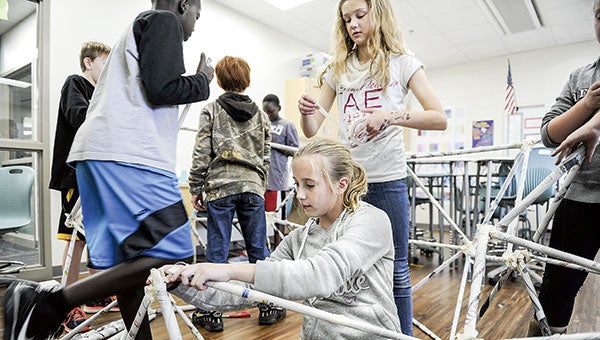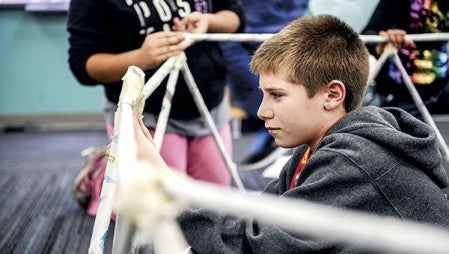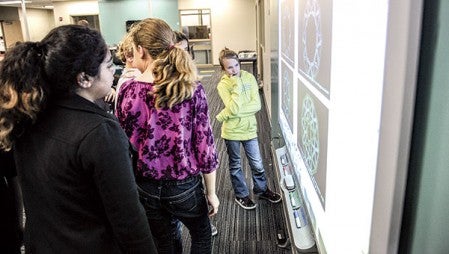The power of print; I.J. Holton sixth-graders use newspapers to build domes
Published 10:13 am Friday, October 24, 2014

Emma Rosheim works in the hustle and bustle to shore up a joint during a project that had students at I.J. Holton making structures out of rolled up newspapers. Photos by Eric Johnson/photodesk@austindailyherald.com
Sixth-graders at I.J. Holton Intermediate School spent Thursday creating geodesic domes out of newspapers and masking tape.
“We’re building domes and the school got a bunch of newspaper, and we had to roll it into little tubes,” Elyse Hebrink, 11, said. “It beats sitting in a chair and learning.”
Each group received newspaper, tape and scissors to create their dome structures, which were supposed to hold about 30 pounds.
It sounds far more simple than the project actually is, as every sixth-grader at I.J. Holton learned Thursday.
Sixth-graders began the first of four large-scale engineering units this week as part of the school’s Science, Technology, Engineering, Arts and Mathematics (STEAM) curriculum.

I.J. Holton student Elijah Hemann tapes a joint as his group builds a structure out of newspapers Thursday at the school.
Photos by Eric Johnson/photodesk@austindailyherald.com
“It’s not as easy as it looks,” Elyse said. “The more tape that you use the harder it is, and you only have two rolls of tape.”
The units involve multiple subjects, from reading and social studies at the beginning to set up the eventual experiment, to Thursday’s demonstration of basic math concepts using simple geometry and trigonometry, to eventually creating a windmill designed to aerate a pond in a few weeks.
Students started planning their domes at around 9:45 a.m. and worked with the paper from about 11:45 a.m. to 2:45 p.m. The project is a transition into an engineering curriculum. Each class, literature, science, math and social studies, has worked toward the project in their own way. In science, the students have been learning about wind. In literature, they have been learning different stories that correlate with architecture. Yet the project isn’t just about academic learning, as Jackson Marsh, 12, said.
“The teamwork that has to go along with it, because if you don’t have teamwork within your group it’s very hard to go along with it,” Jackson said.
Elyse agreed.
“We’re learning from this [that] one person just can’t work for what you need, everyone needs to work,” she said.
Literature teacher Jen Sims was excited for the work day.
“They’re working on building collaboration skills and communications skills as well as becoming engineers,” she said.

Claudia Kniefel studies plans for structures built out of newspapers Thursday at I.J. Holton Intermediate School.
The different classes were mixed for the project, with students partnering off by numbers. Elyse was glad to work with other students she wouldn’t normally get a chance to connect with.
All 12 sections worked on the projects, and their teachers helped guide the progress. They planned the project for the last couple of weeks, receiving donated newspapers from the Herald. Yet this project isn’t the first of its kind at I.J. Holton.
“The students actually started with toothpicks and gumdrops,” Sims said.
Sixth-graders also completed the project last year. The project was part of an introduction into an engineering unit. Sims said the strength of each project depends on the quality the students put into the projects. At the end of the day, one of the math teacher’s 2-year-old son came in and “tested” out the structures to see if they would hold his weight, since he weighed abut 30 pounds. Their next plan was to test the structures with crates with books on top.
—Trey Mewes contributed to this report.





